
 |
a.k.a.

St George
|
|
|
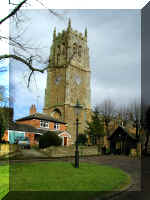 |
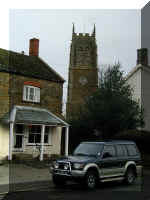 |
|
1 |
2 |
|
Known as "The Cathedral of the Feldon"
there has been a church on this site from Saxon times, and the
area is known to have been occupied by the Romans before
them. Some traces of Saxon and early Norman work have been
found in the church building, and the foundations of the church
mentioned in 1124 were discovered beneath the south arcade
of the nave during the 1879 "restoration".
The area is now generally known as "Brailes",
but it once covered a much wider area of settlement, including
the nearby village of Cherington, and the former Manors of
Chelmscote and Winderton.
In the 14th century Brailes was a bustling
market town, with its market granted by charter in 1248, when
there was a Monday market and a three-day fair "on the eve,
day and morrow of St George's Day". Both the Church
and the nearby Public House (7) are still called St
George.
|
|
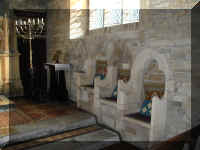
|
|
3 |
|
These sedilia in the chancel are of note
because they are on three different levels, corresponding to the
three steps occupied at a mass in the Middle Ages by
Celebrant, Deacon and Sub-Deacon. They also were restored in
1879. An earlier restoration in 1824 is
recorded on a plaque on the wall of the north aisle, upon which
is recorded:
| The interior of this
church was repaired and the accommodation enlarged in
the year 1824, by which means 175 additional seatings
have been obtained, and in consequence of a grant from
the Society Promoting the Enlargement and Building of
Churches and Chapels, 155 of that number are hereby
declared to be free and unappropriated for ever, in
addition to 110 formerly provided in the church.
Cornwall Smalley, Vicar
William Baker, Joseph
Spencer, Churchwardens. |
The date of the building of the gallery is not
recorded, but it is possible that this "Restoration",
which essentially enlarged the seating in the church, was the
means by which the building of the gallery was accomplished.
|
|
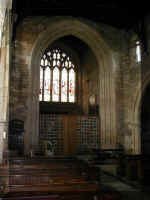 |
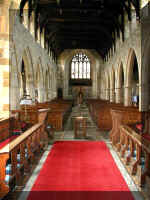 |
|
4 |
5 |
|
4 - The west end of the church,
and 5 - a view to the west end from the chancel
steps.
The Church Guide records that " an
ugly gallery painted black and with a partition of lath and
plaster" which blocked the western arch of the tower
completely was removed during the "restoration" of
1879, as were the old box-pews, which were replaced by the
present seating. |
|
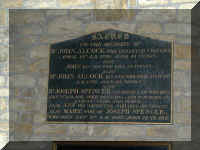 |
|
6 |
|
Memorial to John Alcock who died April 14th,
1760, aged 42; also John Alcock who died July 15th, 1788, aged
29; and to Joseph Spencer, son-in-law of John Alcock, Senr.
|
|
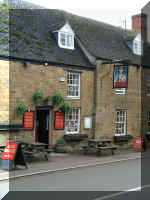 |
|
7 |
|
The George, an inn owned by the Hook Norton Brewery.
|
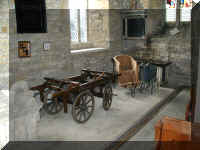 |
|
8 |
|
8 - The wheeled bier, still in
use, was given in memory of the wife of the Rev'd. T.
Smith. Note also the contrast between the wheeled Bath
Chair and its modern equivalent.
|
|
|
|
Dove's reference for the bells:
|
|
Brailes,
Warwick, S George, 6, 29-0-19 in C.
This
is the third heaviest ring of six bells in the
country.
|
|
ACCESS |
| Map reference : SP315393
The
church stands at the top of a small green adjacent
the village street, and is approached past the war
memorial and through a dark lych-gate, upon which is
a curious Latin inscription. The south door is
reached by a short path from the village green, and
there is on-street parking nearby.
|
|
|
|
|
Photographs: ©
Edwin Macadam
2002
The Parochial Church Council would also like their consent
sought for the reuse of any pictures.
|
|
|
Please see our
Home Page
for important copyright notice |
|
|
|

|

|
|
|

|
| the Webmasters |
| |
This
site has been constructed by, and remains the copyright of its authors,
Edwin Macadam and Sheila Girling Smith, Shelwin, 30,
Eynsham Road, Botley,
Oxford OX2 9BP
|
| |
| © July 2001 - |
| email
|
|

